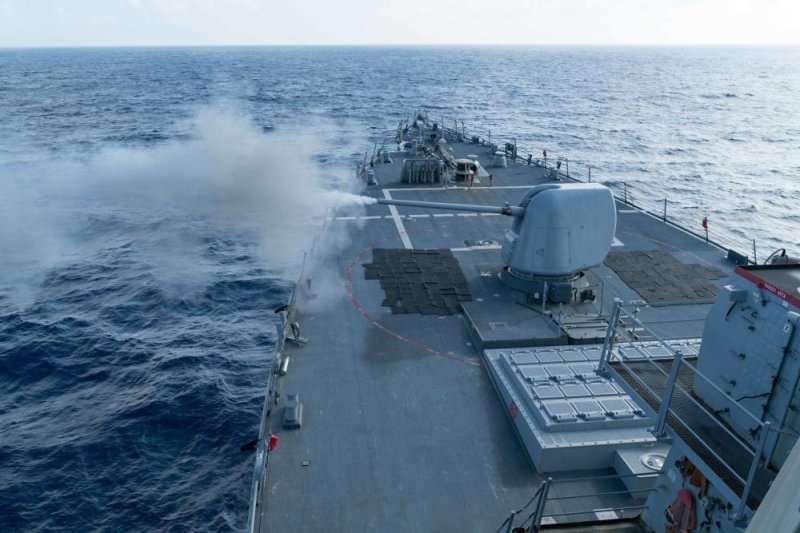The Arleigh Burke-class guided-missile destroyer USS Curtis Wilbur, shown here conducting a live fire gunnery exercise in 2016, transited the Taiwan Strait on Wednesday. Photo by Jonathan Peterson/U.S. Navy
Feb. 25 (UPI) -- The Arleigh Burke-class destroyer USS Curtis Wilbur transited the Taiwan Strait this week, the Navy announced.
The Wilbur, which transited the strait on Wednesday, is the second U.S. vessel to do so this year, as well as the second since President Joe Biden took office on Jan. 20, under the Navy's regular freedom-of-navigation operations.
"The ship's transit through the Taiwan Strait demonstrates the U.S. commitment to a free and open Indo-Pacific," said a Navy press release. "The United States military will continue to fly, sail, and operate anywhere international law allows."
People's Liberation Army Eastern Theater Command spokesperson Zhang Chunhui said China "firmly opposed " the transit and that Chinese troops are "ready to respond to any threats and provocations," USNI News reported.
The Navy routinely conducts freedom-of-navigation operations in the contested waterway, often drawing criticism from the Chinese government, which sees Taiwan as a breakaway province.
Earlier this month, the USS John McCain transited the strait, drawing criticism from Chinese officials who believe international vessels should seek permission before entering the waterway.
In addition to conducting freedom-of-navigation operations in the area, President Joe Biden and Defense Secretary Lloyd Austin have signaled that China will be a key focus area for the new administration.
Earlier in February, President Joe Biden announced a new 15-member Department of Defense task force to examine U.S. "strategy and operational concepts, technology and force posture" in China.
"Clearly the strategy will be arrayed against the threat and China presents the most significant threat going forward because China is ascending. Russia is also a threat, but it's in decline," Defense Secretary Lloyd Austin told the Senate Armed Services Committee in January during a confirmation hearing for his role.















